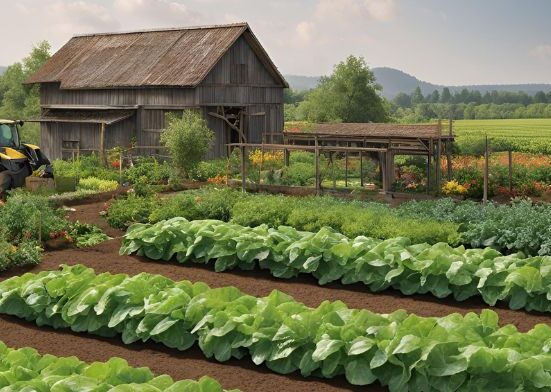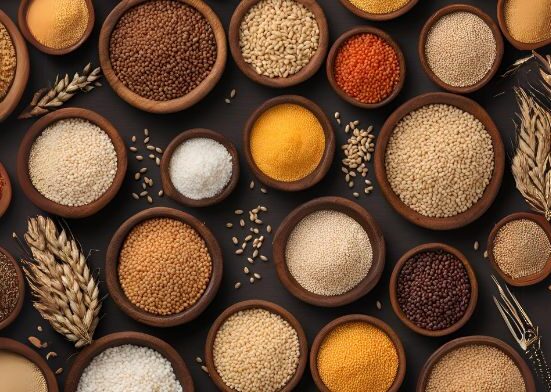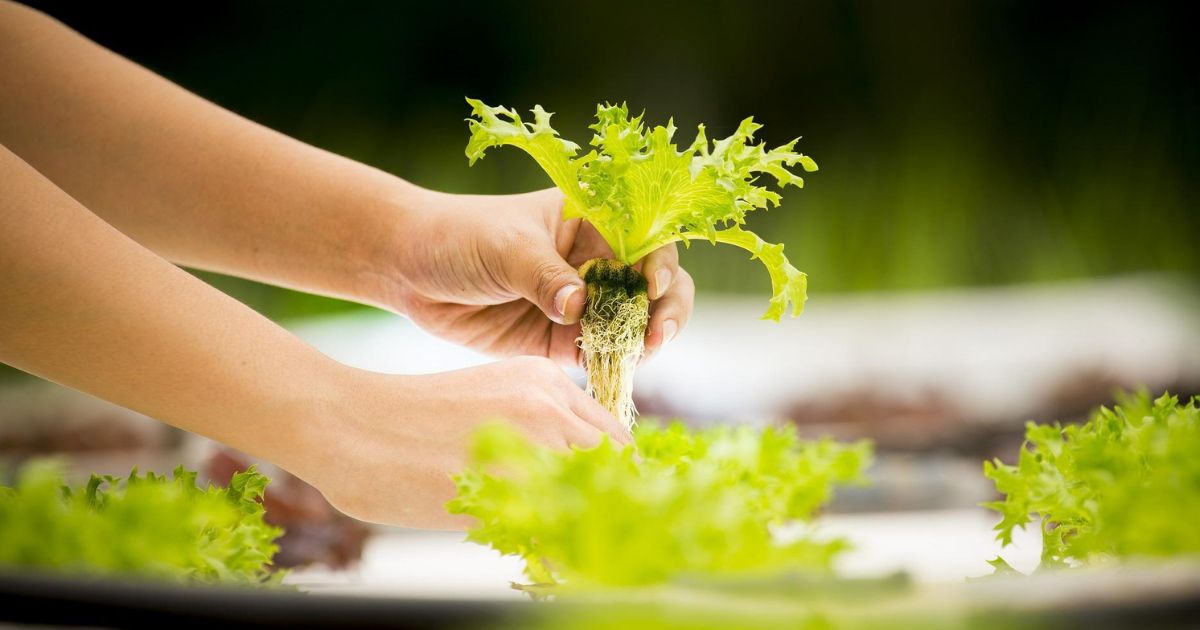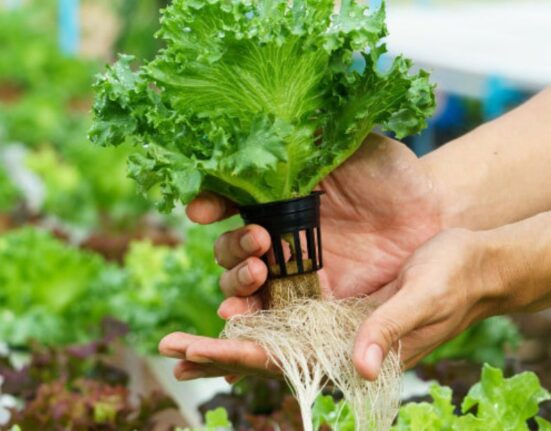Hydroponic farming is revolutionizing the way we think about growing food. Instead of depending on soil, hydroponics relies on nutrient-rich water solutions to nourish plants. For beginners, it may sound like something out of a science lab, but in reality, hydroponics can be simple, cost-effective, and highly rewarding once you understand the basics. Whether you’re a gardening enthusiast with limited space, an urban dweller dreaming of fresh vegetables on your balcony, or a hobbyist wanting to experiment with innovative farming, hydroponics provides a fantastic gateway to growing plants in a sustainable way.
This easy start guide covers everything you need to know about hydroponic farming for beginners, from understanding what it is, why it matters, and the different systems available, to a step-by-step guide on how to get started.
What Is Hydroponic Farming?
Hydroponic farming is the method of growing plants without soil. Instead, plants are grown in a controlled environment using nutrient-rich water solutions. The roots are either submerged directly in water or supported by inert growing mediums such as perlite, coco coir, or rockwool. Unlike traditional farming, where plants rely on soil to deliver nutrients, hydroponics gives plants exactly what they need in a more efficient and direct way. Because of this, plants often grow faster, use less water, and produce higher hydroponics system yields.
Why Choose Hydroponic Farming?
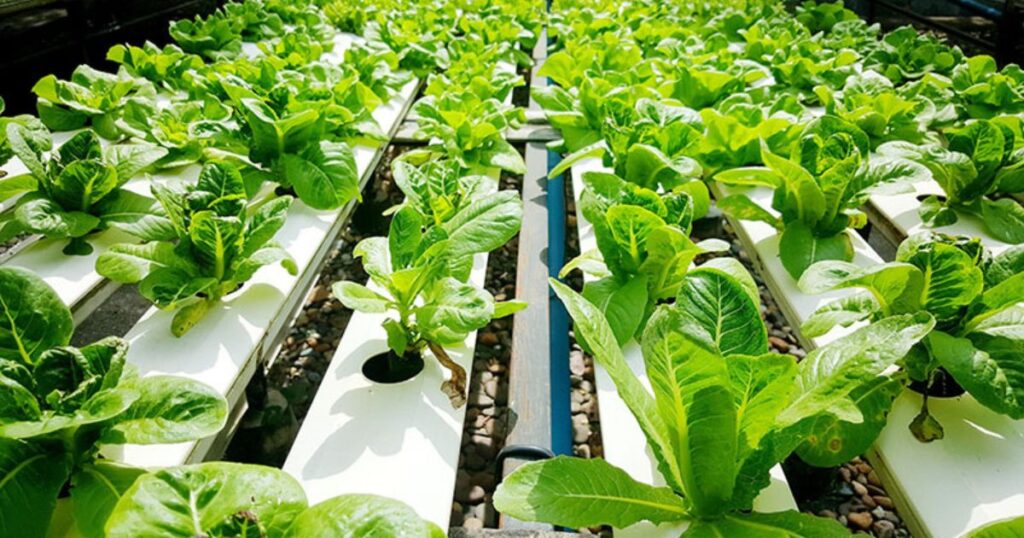 Hydroponic farming is an innovative method of growing plants without soil, using nutrient-rich water solutions to deliver essential minerals directly to the roots. This modern approach offers faster plant growth, higher yields, and efficient use of space, making it ideal for both home gardeners and commercial growers. Unlike traditional farming, hydroponics requires less water, reduces the risk of pests and soil-borne diseases, and allows year-round cultivation in hydroponic systems controlled agricultural organic environments.
Hydroponic farming is an innovative method of growing plants without soil, using nutrient-rich water solutions to deliver essential minerals directly to the roots. This modern approach offers faster plant growth, higher yields, and efficient use of space, making it ideal for both home gardeners and commercial growers. Unlike traditional farming, hydroponics requires less water, reduces the risk of pests and soil-borne diseases, and allows year-round cultivation in hydroponic systems controlled agricultural organic environments.
It’s also eco-friendly, as it conserves resources and often uses vertical systems that maximise limited spaces, even in urban areas. Whether you want fresher, healthier produce at home or a sustainable way to feed communities, hydroponic farming is the future of agriculture—clean, productive, and adaptable to modern diy hydroponic indoor garden living.
Faster Growth
Faster Growth refers to the process of accelerating development, whether in plants, businesses, skills, or personal goals. It involves optimising conditions, resources, and strategies to achieve results more quickly and efficiently. In gardening or farming, faster Growth can be achieved through proper soil nutrition, watering, and sunlight. In personal or professional contexts, it comes from continuous learning, innovation, and effective planning. Embracing techniques that support faster Growth leads to higher productivity, improved performance, and timely achievement of objectives, making progress more rewarding and hydroponic Hydroponic Farming For Beginners: A Complete Guide sustainable.
Higher Yields
Higher yields refer to increased agricultural or production output from the same amount of resources, such as land, water, or labour. Achieving higher yields often involves improved farming techniques, advanced technology, quality seeds, efficient irrigation, and sustainable practices. For farmers and producers, higher yields mean greater profitability, better resource use, and the ability to meet growing demand. In agriculture, it plays a crucial role in food security, sustainability, and economic Growth, helping communities thrive while reducing environmental impact through smarter, more efficient hydro farming production.
Water Efficiency
Water efficiency is the practice of using water in a sustainable, responsible way to minimise waste while maximising its benefits. It involves smart management of water resources through techniques like drip irrigation, rainwater harvesting, and water-saving appliances. In agriculture, industry, and daily life, water efficiency helps conserve this vital resource, reduce costs, and protect the environment. By promoting efficient usage, we ensure long-term water availability, support ecosystems, and contribute to climate resilience, making water efficiency a key component of sustainable living and environmental hydroponic kits for beginners How Perennials Grow stewardship.
Space-Saving
Space-saving refers to innovative design and organisation strategies that maximise available area while reducing clutter. Whether in homes, offices, or gardens, space-saving solutions focus on efficiency and functionality without compromising style. This includes compact furniture, multi-use storage, vertical shelving, and clever layouts that make the most of limited square footage. Perfect for small apartments, tiny homes, or minimalist lifestyles, space-saving ideas enhance comfort, improve organisation, and what is hydroponic farming create a
Fewer Pests and Diseases
Without soil, many soil-borne pests and diseases are eliminated, reducing the need for pesticides. Because hydroponics works indoors or in greenhouses, plants aren’t limited by seasons. Fresh greens, herbs, and vegetables can be harvested anytime.
Types of Hydroponic Systems
Hydroponic systems offer innovative ways to grow plants without soil, using nutrient-rich water solutions for optimal Growth. There are several types, each with unique advantages. The Deep Water Culture (DWC) system suspends plant roots directly in water for constant nutrient access. Nutrient Film Technique (NFT) uses a thin film of flowing solution to feed roots continuously. Wick systems are simple and passive, using absorbent wicks to draw nutrients to the roots.
Ebb and Flow (Flood and Drain) cycles water into the growing tray and then drains it, promoting oxygenation. Drip systems deliver nutrients directly to each plant’s base with precision: Aeroponics, the most advanced, mists roots with nutrients for maximum oxygen exposure. Choosing the right System depends on space, budget, and crop hydroponic agriculture system needs.
Deep Water Culture (DWC)
Deep Water Culture (DWC) is a popular hydroponic system where plant roots are suspended in nutrient-rich, oxygenated water. This method allows plants to absorb nutrients directly and grow faster compared to traditional soil gardening. An air pump provides oxygen, preventing root rot and promoting healthy Growth. DWC is ideal for leafy greens, herbs, and other fast-growing crops. It offers high yields, efficient nutrient use, and easy maintenance, making it perfect for beginners and experienced growers alike. This System supports sustainable, soil-free cultivation year-round.
Nutrient Film Technique (NFT)
Nutrient Film Technique (NFT) is a popular hydroponic growing method where a thin stream of nutrient-rich water continuously flows over plant roots in a sloped channel. This ensures roots receive constant access to oxygen and nutrients without being fully submerged, promoting faster Growth and healthy development. NFT systems are efficient, conserve water, and are ideal for leafy greens and herbs. However, they require careful monitoring of nutrient levels and pumps to prevent interruptions. NFT offers a sustainable, high-yield solution for modern soilless farming.
Ebb and Flow (Flood and Drain)
Ebb and Flow (Flood and Drain) is a popular hydroponic system that uses a cyclical process of flooding plant roots with nutrient-rich water and then draining it away. This method ensures plants receive optimal oxygen and nutrients while preventing root rot. The System relies on a timer to regulate flooding cycles, making it efficient and easy to manage. Ideal for a variety of crops, Ebb and Flow promotes faster Growth, healthier roots, and higher yields. It’s a versatile choice for both beginners and experienced growers.
Wicking System
A wicking system is a simple, efficient self-watering method for gardens and containers. It uses a water reservoir beneath the soil, connected to the planting medium through a wick material, such as fabric or rope. This wick draws water upward via capillary action, keeping soil consistently moist without overwatering. Ideal for busy gardeners, drought-prone areas, or container gardening, wicking systems conserve water and promote healthy plant growth. They reduce evaporation, save time, and ensure plants receive steady hydration, making them a sustainable, low-maintenance watering solution.
Aeroponics
- Roots are suspended in the air and misted with the nutrient solution.
- Highly efficient but requires precise control and is more advanced.
- Nutrient solution drips slowly at the base of each plant.
- Easy to scale from small home setups to large farms.
Choosing the Right Growing Medium
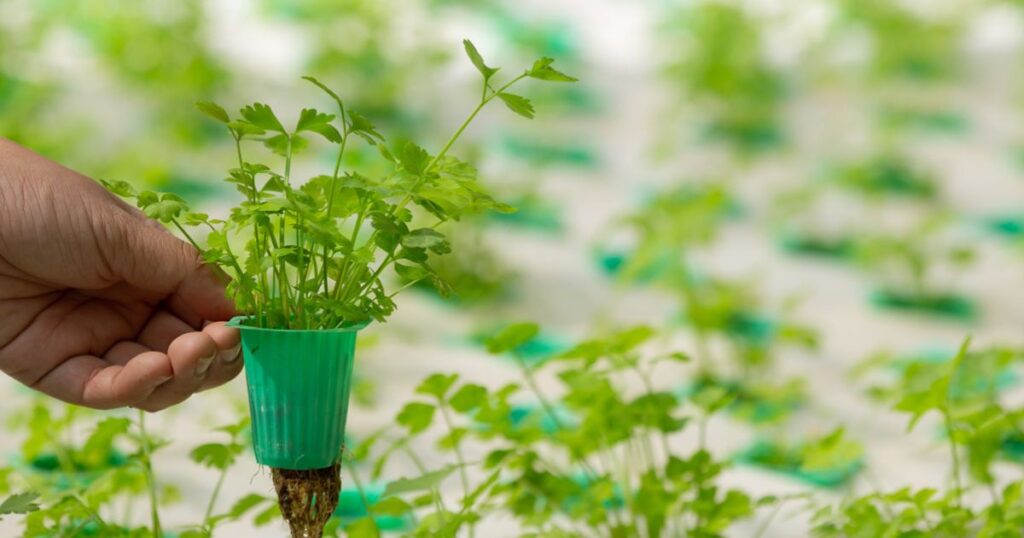
Choosing the right growing medium is essential for healthy plant growth, whether you are gardening traditionally, using containers, or exploring hydroponics. A growing medium serves as the foundation that provides plants with water, oxygen, and nutrients while supporting root development. The best medium depends on your plant type, growing method, and environment. Options range from soil, rich in organic matter and beneficial microbes, to soilless alternatives like coco coir, perlite, vermiculite, and rockwool.
Each medium offers unique benefits—soil is natural and nutrient-rich, coco coir retains moisture, while perlite improves drainage and aeration. Balancing water retention with proper airflow ensures stronger root systems and healthier crops. By carefully selecting the right growing medium, gardeners can create optimal conditions for higher yields, disease resistance, and long-term plant vitality.
- Coco Coir: Made from coconut husks; retains water well and is eco-friendly.
- Perlite: Lightweight volcanic rock; provides excellent aeration.
- Vermiculite: Retains moisture and nutrients.
- Rockwool: Fibrous and durable; often used in commercial hydroponics.
- Clay Pellets (LECA): Reusable and excellent for aeration.
As a beginner, coco coir or clay pellets are often the easiest to start with.
What Can You Grow with Hydroponics?
Hydroponics opens the door to growing a wide variety of plants without soil, making it a smart choice for gardeners and commercial growers alike. With the right setup, you can cultivate leafy greens like lettuce, spinach, kale, and arugula, which thrive in nutrient-rich water systems. Herbs such as basil, mint, cilantro, and parsley also grow exceptionally well, providing fresh flavours year-round.
Fruiting plants like tomatoes, cucumbers, peppers, and strawberries adapt beautifully to hydroponics, producing higher yields in controlled environments. Even flowers such as orchids and roses can flourish hydroponically, adding beauty to your System. Root vegetables are more challenging but possible with advanced methods. From small indoor gardens to large-scale farms, hydroponics makes it possible to grow fresh, healthy, and sustainable crops in less space with less water.
Best Crops for Beginners:
- Lettuce
- Spinach
- Kale
- Basil
- Mint
- Cilantro
- Strawberries
Intermediate Crops:
- Tomatoes
- Cucumbers
- Peppers
- Beans
Advanced Crops:
- Root vegetables (carrots, radishes, potatoes)
- Larger fruiting plants (melons, squash)
Step-by-Step Guide to Starting Hydroponic Farming
Hydroponic farming is a modern, soil-free method of growing plants using nutrient-rich water, making it an efficient way to produce fresh vegetables, herbs, and fruits year-round. Our Step-by-Step Guide to Starting Hydroponic Farming is designed for beginners who want to learn the basics and set up a successful system at home or on a larger scale. This guide covers everything from understanding different hydroponic systems, choosing the right plants, and preparing nutrient solutions, to managing light, temperature, and water quality.
You’ll also discover practical tips for troubleshooting common issues and maximising yields. Whether you’re a hobby gardener, urban farmer, or aspiring entrepreneur, this detailed guide provides the knowledge and confidence to start your hydroponic journey and enjoy fresh, sustainable produce straight from your own setup.
Decide on Your Hydroponic System
Choosing the right hydroponic System is a crucial step for successful indoor or greenhouse gardening. Consider factors like available space, budget, crop type, and maintenance needs. Popular systems include NFT (Nutrient Film Technique), deep water culture, drip systems, and aeroponics, each with unique benefits and challenges. Beginners prefer simple setups, while advanced growers may opt for automated systems. Researching and aligning your choice with your goals ensures efficient Growth, optimal yields, and a rewarding hydroponic experience tailored to your needs.
Gather Supplies
Gather Supplies” means collecting all necessary tools, materials, and resources needed to complete a task efficiently. Whether for a DIY project, cooking, gardening, or an event, this step ensures preparedness and smooth workflow. It involves identifying what’s required, organising items, and verifying their quality and quantity. Properly gathering supplies saves time, reduces stress, and prevents interruptions. This process often includes checking lists, sourcing items from various locations, and arranging them for easy access before starting the main activity, ensuring success and efficiency.
Set Up the System
- Fill the reservoir with water.
- Add nutrients according to instructions.
- Adjust pH to 5.5–6.5 (most plants thrive in this range).
- Place plants in net pots with growing medium.
- Ensure roots can access the nutrient solution.
Provide Light
- If indoors, use grow lights (LEDs are energy-efficient).
- Plants need about 12–16 hours of light per day.
Common Mistakes Beginners Should Avoid
Starting something new is exciting, but beginners often face challenges that can slow progress or cause frustration. Many common mistakes arise from a lack of preparation, rushing the process, or misunderstanding the basics. Skipping research, neglecting proper planning, and ignoring small details can lead to setbacks that are easily avoidable with awareness. Overconfidence, comparing yourself to others, or expecting quick results can also discourage Growth.
Another frequent mistake is not seeking guidance or learning from more experienced individuals. By recognising these pitfalls early, beginners can build a strong foundation, develop good habits, and stay motivated throughout the journey. Avoiding these missteps not only saves time and energy but also boosts confidence, ensuring steady improvement and long-term success in any new endeavour.
- Ignoring pH Levels
- Even if you have the best nutrients, plants can’t absorb them if the pH is off. Regularly test and adjust.
- Overfeeding Nutrients
- More nutrients don’t mean faster Growth. Follow instructions carefully to avoid nutrient burn.
- Poor Lighting
- Plants need consistent, high-quality light. Insufficient light results in weak, leggy Growth.
- Not Providing Enough Oxygen
- In water-based systems, roots can suffocate without aeration. Always use an air pump in DWC systems.
- Overcrowding Plants
- Give plants enough space to grow. Overcrowding leads to competition and smaller yields.
How Much Does Hydroponic Farming Cost?
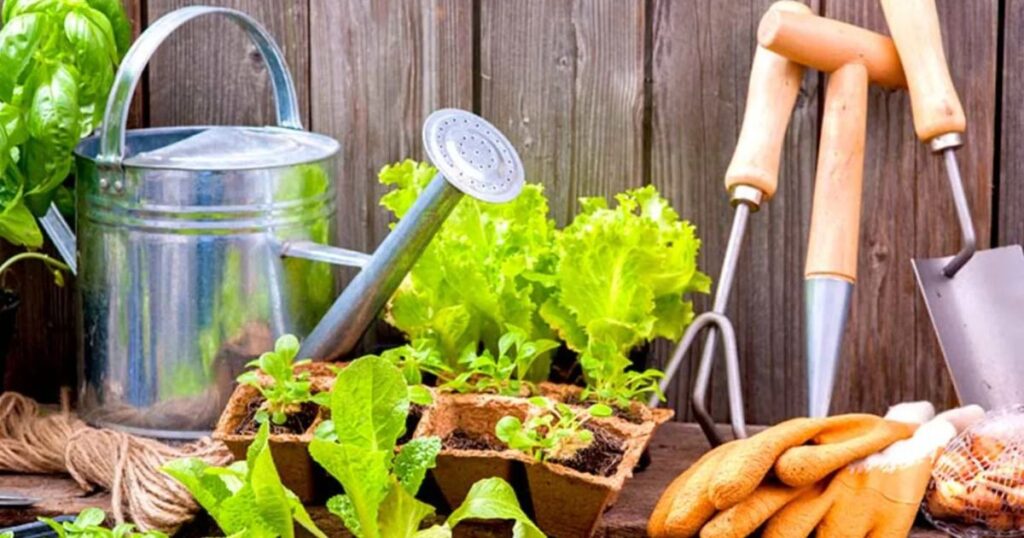 Hydroponic farming is gaining popularity as a modern, soil-less method of growing fresh produce year-round. However, understanding the cost is essential before getting started. The investment varies depending on the scale, system type, and technology used. Small home-based hydroponic setups can cost between $100 and $500, while larger commercial farms may require investments ranging from $10,000 to over $100,000. Expenses typically include grow lights, water pumps, nutrient solutions, pH meters, and climate control systems.
Hydroponic farming is gaining popularity as a modern, soil-less method of growing fresh produce year-round. However, understanding the cost is essential before getting started. The investment varies depending on the scale, system type, and technology used. Small home-based hydroponic setups can cost between $100 and $500, while larger commercial farms may require investments ranging from $10,000 to over $100,000. Expenses typically include grow lights, water pumps, nutrient solutions, pH meters, and climate control systems.
Operating costs such as electricity, water, and nutrient replenishment also add to the budget. While the upfront investment may seem high, hydroponics offers higher yields, faster Growth, and efficient water use, making it a profitable option in the long run. Careful planning helps balance costs with long-term benefits.
Hydroponics vs Traditional Soil Farming
Hydroponics is a soil-free system where plants grow in nutrient-rich water solutions, offering faster Growth, higher yields, and year-round production with less water and space. It’s ideal for urban farming and controlled environments, but requires technology and careful monitoring. Traditional soil farming relies on natural soil, sunlight, and rain, offering a simpler, time-tested approach that supports biodiversity and benefits from organic processes.
However, it depends heavily on weather, soil quality, and larger land areas. Comparing these methods helps farmers, gardeners, and sustainability advocates choose the best approach based on resources, goals, and environmental impact, blending innovation with tradition for optimal agriculture.
Tips for Success in Hydroponics
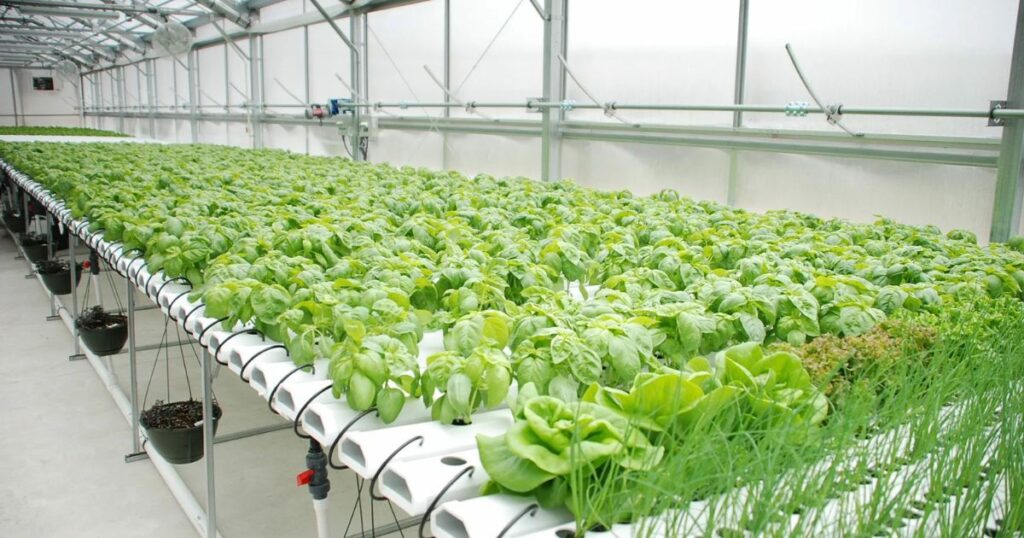 Hydroponics offers an innovative way to grow plants without soil, making gardening efficient and sustainable. To succeed in hydroponics, start by choosing the right System—such as nutrient film technique, deep water culture, or ebb and flow—based on your space and plant type. Maintain optimal water quality by monitoring pH and nutrient levels regularly. Ensure plants receive adequate light, either natural or artificial, and keep temperature and humidity within ideal ranges. Clean your System routinely to prevent algae and disease buildup. Select nutrient solutions tailored to your plants’ growth stage for maximum yield.
Hydroponics offers an innovative way to grow plants without soil, making gardening efficient and sustainable. To succeed in hydroponics, start by choosing the right System—such as nutrient film technique, deep water culture, or ebb and flow—based on your space and plant type. Maintain optimal water quality by monitoring pH and nutrient levels regularly. Ensure plants receive adequate light, either natural or artificial, and keep temperature and humidity within ideal ranges. Clean your System routinely to prevent algae and disease buildup. Select nutrient solutions tailored to your plants’ growth stage for maximum yield.
Future of Hydroponic Farming
Hydroponics is more than just a hobby—it’s shaping the future of agriculture. With population growth, climate change, and shrinking farmland, hydroponics offers a sustainable solution to feed the world. Commercial hydroponic farms are now producing tons of fresh food year-round, often in cities close to consumers, reducing food miles and waste.
For beginners, starting small at home is the first step in connecting to this bigger picture. Every leafy green you grow hydroponically is part of a sustainable food revolution.
Conclusion:
Hydroponic farming for beginners may sound intimidating, but with the right knowledge and a willingness to experiment, it can be one of the most rewarding ways to grow plants. From saving water to producing fresh, chemical-free food year-round, hydroponics opens the door to gardening innovation.
Start with a simple system, grow easy crops like lettuce or herbs, and gradually expand your setup as you gain confidence. With patience and care, you’ll not only enjoy fresh harvests but also gain valuable skills that connect you to the future of farming.
FAQ:
What is Hydroponic Farming?
Hydroponic farming is a soilless method of growing plants using nutrient-rich water solutions. Plants grow with their roots submerged in or misted with nutrient solution, which provides all essential minerals for Growth.
How does Hydroponic Farming Work?
Hydroponic systems deliver nutrients directly to plant roots through water. The process relies on a controlled environment where light, temperature, pH, and nutrient concentration are carefully monitored for optimal Growth.
Is Hydroponic Farming Expensive to start?
Initial costs can be higher than traditional farming due to equipment, nutrient solutions, and lighting. However, operational costs can be lower over time because hydroponics uses less water and land, produces faster yields, and allows year-round farming.
How much Space do I need for Hydroponic Farming?
Hydroponic systems are highly scalable. They can be set up in small spaces like balconies, rooftops, or basements, as well as in large commercial greenhouses.
Do I need Prior Farming Experience for Hydroponics?
No. Hydroponics is beginner-friendly with proper guidance. There are plenty of starter kits and online resources to help beginners set up and manage a system.




